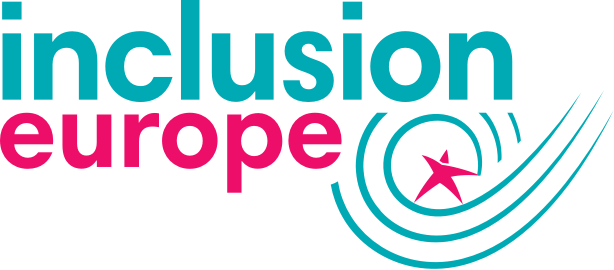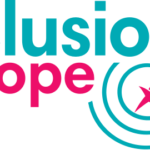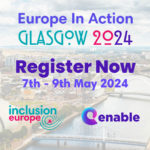What if you learn more about inclusive education through the alphabet? As part of our campaign of 2020 focused on education, Inclusion Europe created the ABCs of inclusive education to help you understand what inclusive education is and what its benefits and challenges are.
A: Accessibility
Accessibility is a founding element of inclusive education. The right to accessibility and reasonable accommodations guarantee to all learners with disabilities the right to attend schools on an equal basis to others and without discrimination.
B: Be part of the community
With inclusive education, all learners are able to be part of their community, develop a sense of belonging and become better prepared for life in the community as children and adults.
C: Cooperation
Inclusive education involves adopting new teaching practices which foster cooperative learning and peer tutoring. In an inclusive school, learners are taught in small classes in which they collaborate and support one another rather than compete.
D: Diversity
One of the key ingredients of an inclusive education system is that school culture respects and values diversity.
E: Everyone
Everyone has the right to learn. Education is a fundamental human right. According to article 24 of the UN Convention on the Rights of Persons with Disabilities (UN CRPD), State parties must take steps to ensure that all people with disabilities have access to quality education.
F: Flexible learning
Inclusive education is based on diversity. Every learner is different. That is why it is important that teaching methods meet the individual needs of learners. This requires a more flexible and creative approach to education and curriculum.
G: Growing
Inclusion has no limits. It is constantly evolving and growing.
H: Health
As inclusion increases, so does health. Learners with disabilities who have been included in school are healthier.
I: Invest in inclusive early childhood care and education (ECCE)
One of the steps towards achieving inclusive education is to invest in inclusive ECCE that is supported by a variety of professionals knowledgeable about early identification of children at risk of delay or disability.
J: Justice
A society is fair once it provides accessible and adequate disability support, when it does not stigmatise people with disabilities but recognises that everyone is interdependent. Inclusive education gives both support and opportunities to learners with disabilities.
K: Keep an open mind
Inclusive education includes teaching learners of all abilities and backgrounds together. The teachers must keep an open mind and recognise different learning styles which call for different instruction.
L: Legislative frameworks
It is necessary to create favourable legislative frameworks that promote the right to access inclusive education for all. This includes the implementation and ratification of the UN CRPD and the Convention on the Rights of the Child, ensuring that national education laws are in line with these conventions.
M: One ministry for all learners
One of the steps towards achieving inclusive education is to ensure that one ministry is responsible for educating all learners of the same age and level of education. In many countries, a social ministry rather than an education ministry is responsible for educating children with disabilities. This needs to change.
N: Needs
An inclusive education system responds to the needs of every child without discrimination. This means that schools welcome all children and respond to their individual needs. Inclusive education teachers use principles of individualised instruction to address the strengths and needs of their learners.
O: Opportunities
Inclusive education teachers aim to equalise the playing field and provide all learners with equitable learning opportunities within the regular school system. It also provides all children with opportunities to learn and accept one another’s abilities, talents, personalities, and needs.
P: Physical accommodation
Inclusive education is also about physical accommodations. For example, ramps instead of stairs and doorways wide enough for wheelchair users.
Q: Quality education
The UN CRPD Committee says that “inclusive education is central to achieving high-quality education for all learners, including those with disabilities, and for the development of inclusive, peaceful and fair societies.” Everyone benefits from inclusive education. Learners with intellectual disabilities, for instance because they can feel included and find friends from different backgrounds. Learners without intellectual disabilities, for example because they can learn behaviours and values such as empathy and cooperation.
R: Resources
One of the key ingredients of an inclusive education system is that schools have access to the financial and human resources to support inclusion.
S: no Segregation
Inclusion involves ending segregation. What does that mean? Segregation occurs when learners with disabilities are educated in separate environments (classes or schools) designed for learners with disabilities. On the contrary, inclusive education entails providing meaningful learning opportunities to all learners within the regular school system.
T: Trained teachers
One of the key ingredients of an inclusive education system is that teachers are trained and supported on how to individualise their teaching using different methods for different learning style so that all students can learn.
U: Understanding
Inclusive classrooms foster attitudes of respect, understanding and empathy. Inclusive education also helps change discriminatory attitudes and reverse stigmas around disabilities.
V: Valuate other perspectives
One of the principles of inclusive education is that no two learners are alike. Inclusive schools place great importance on creating opportunities for students to learn and be assessed in a variety of ways. That is why teachers in inclusive schools must consider a wide range of learning modalities (visual, auditory, kinaesthetic, etc.).
W: Work together
Inclusive education allows learners with and without disabilities to attend the same age-appropriate classroom and to work together in the same learning environment.
X: eXtra benefits
The extra benefits of inclusive education for learners with disabilities are numerous. Learners with disabilities who have been included in school:
- Perform better in highly inclusive settings;
- Are more likely to look forward to going to school;
- Are more likely to be included and participate in their communities after graduation;
- Are more likely to have employment and access to recreational activities.
Y: Yearn for more
Parents, learners with intellectual disabilities, self-advocates, teachers, and NGOs have been fighting for inclusive education for many years. Inclusion Europe will keep fighting until we make sure all learners with intellectual disabilities have access to quality education!
Z: “Zero reject policy”
One of the steps towards achieving inclusive education is to eliminate laws, policies and/or practices which exclude children from school based on disability. This is sometimes called a “zero reject policy”. That means that schools cannot deny access to learners based on disability and there are clear consequences or accountabilities in place if they do so.
Join our campaign “That’s what I learned” on inclusive education!
Read more about Education here.





